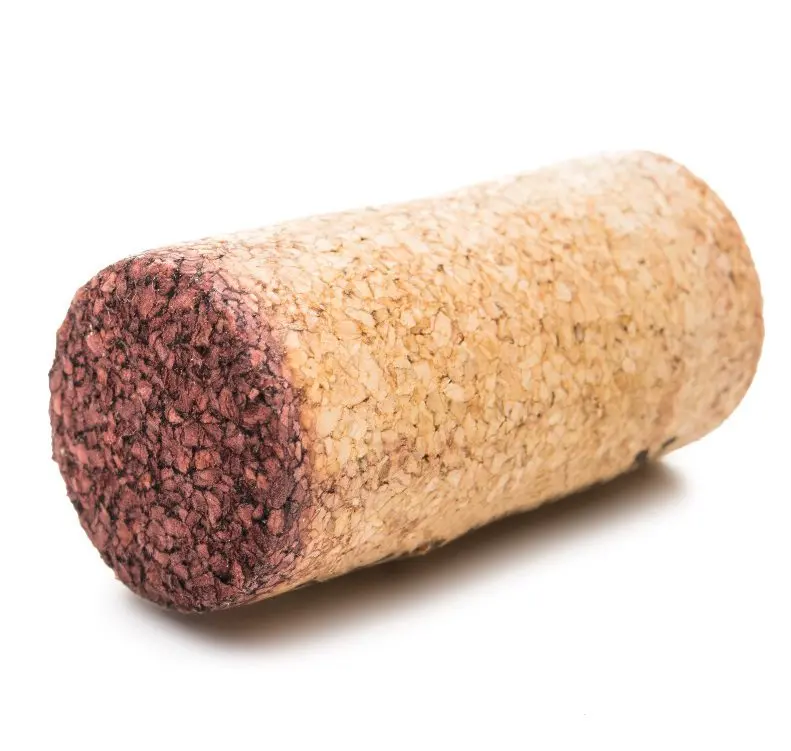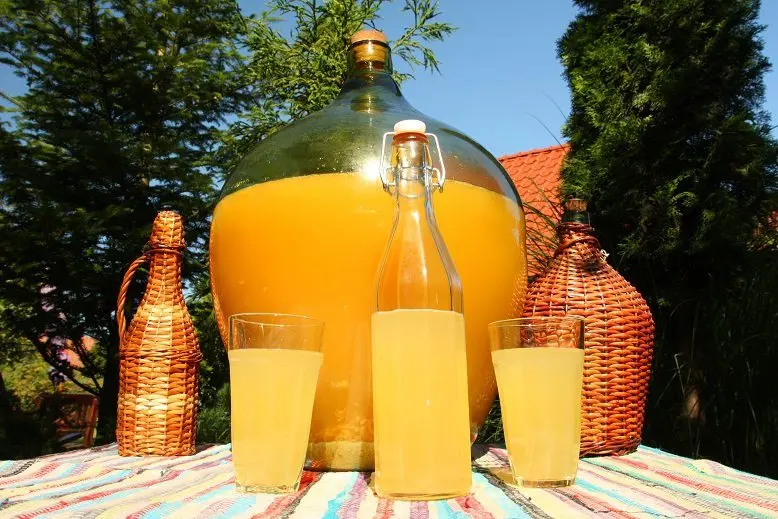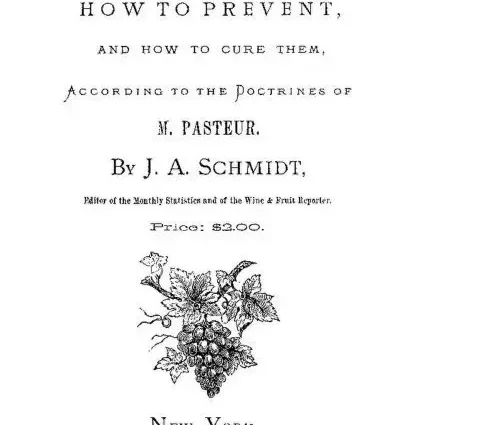Almost every amateur winemaker has encountered wine diseases at least once in his life. They appear due to errors in technology, poor raw materials or improper storage. In most cases, timely detection and proper treatment can save the drink without compromising its quality.
It is easier to prevent the development of the disease than to save the wine. To save time and nerves, general preventive measures help:
- Dishes, utensils and containers (necessarily non-metallic) must be dry and sterile. This rule is important to observe at all stages.
- Carefully select raw materials, avoiding spoiled, rotten and moldy fruits.
- Strictly carry out each item of technology. Often beginner winemakers neglect steps that seem insignificant to them.
- The sugar and water added must be of high quality.
- Constantly check the tightness of the water seal to protect the wine from contact with oxygen.
- Do not heavily dilute the must with water, as this lowers the acidity, making the wine vulnerable to bacterial diseases.
- Store wine in a suitable room at the recommended temperature.
Dangerous wine diseases
A list of intractable diseases, untimely detection and (or) elimination of which leads to the irretrievable loss of wine. When signs of one of these problems are detected, the winemaker must act quickly and decisively, the bill can go to the clock.
Often, dangerous wine diseases are provoked by pathogenic microorganisms that enter the must due to unsterile hands, tools and containers. Free access of air along with high temperatures only exacerbate the problem.
1. Vinegar souring
The disease is typical for natural wines with a strength below 14 degrees. It develops with access to air and high temperature (24-29 ° C). The causative agent is acetic bacteria, which convert alcohol into acid. The carriers are Drosophila flies.
At first, a slight smell of vinegar is felt, then a thin white translucent film appears on the wine, sometimes with a blue tint. A few days later, it sinks to the bottom, forming a vinegar nest – a thin layer of white sediment.
Prevention: protect the wine from air access, store the drink at low temperatures (10-12°C).
Treatment: In the initial stages of the disease, film removal and pasteurization help. To do this, tightly closed bottles of wine should be wrapped in rags and placed in a saucepan, at the bottom of which there is a rag or a wooden pallet. Then pour water up to the level of the cork, heat over medium heat to 60 ° C and cook for 10 minutes, maintaining this temperature. It is impossible to fix completely sour wine.
2. Flowering (wine mold)
Appears in natural wines containing less than 12% alcohol. The causative agent is membranous yeast: microderma, candida and others, which, when exposed to oxygen and a temperature of 22-28 ° C, process alcohol into carbon dioxide and water.
First, a smooth white or yellowish film forms on the surface, then it increases in size, becoming thick and uneven. At the last stage, the mold sinks down, the wine becomes cloudy, an unpleasant musty smell and a watery aftertaste appear.

Prevention: use only clean containers, protect the wine from oxygen and store at low temperatures.
Treatment: in the early stages, drain the wine through a thin tube into another container, without touching the mold layer. In some cases, sulfur treatment helps (a lit sulfur wick is lowered into a container of wine for several minutes) and pasteurization, the technology of which is described in the previous paragraph.
3. Lactic fermentation
Occurs in high sugar wines contaminated with lactic acid bacteria. The disease develops at a temperature of 20-25°C in the depths of the wine. In bright light, you can see the affected layers, inside they have long threads. As a result, the wine becomes cloudy, a characteristic smell of pickled vegetables and an unpleasant sour taste appear.
Prevention: do not use containers and devices that have been in contact with dairy products.
Treatment: pasteurization, wine clarification and subsequent filtration.
4. Mannitol fermentation
The disease of red wines with a strength of up to 14%, the pulp of which was heated for better extraction of coloring substances. The causative agent is heat-loving mannitol bacteria that break down fructose and organic acids of wine into specific mannitol alcohol, acetic and lactic acids. With this disease, the wine becomes cloudy, but its color does not change. The drink has an unpleasant aftertaste that causes nausea.
Prevention: use clean containers, do not heat the pulp.
Treatment: There are no effective treatments for mannitol bacteria.
5. Propionic fermentation
It is caused by bacteria (Bacterium tartarophorum, Bact. mannitopoeum, Bact. gracile, Micrococcus variococcus), which process tartaric acid into propionic and acetic. Affected wine becomes cloudy. Over time, white wines develop a bluish color, while red wines develop a yellow-brown color.
Prevention: sterility of materials and containers.
Treatment: pasteurization and lightening.
6. Obesity
It is typical for young sweet wines with low acidity and a minimum content of tannins. The reason is the bacterium Bacillus viscosus vini, which forms slime in wine. Sick wine gradually thickens, becomes viscous and slimy. The consistency first resembles butter then egg white.

Prevention: regulate the acidity and sugar in the wine, do not dilute the must strongly with water.
Treatment: in the early stages, ventilation helps (transfusion of wine in air from one container to another), pasteurization and sulfur treatment.
7. Mouse taste
It can affect any wine: red, white, sparkling (champagne), dry, table, dessert and fortified. In diseased wine, an unpleasant metallic taste and the smell of mouse excrement appear. Gradually, the drink becomes cloudy, and the unpleasant aftertaste intensifies, leading to complete spoilage of the wine.
The nature of mouse taste is still poorly understood, it is assumed that this disease has two causes. The first is yeast bacteria close to mold, the second is the complex biochemical processes that occur in the wort with an excess of iron. But these are just hypotheses.
Treatment: clarification, acidification and (or) fumigation with sulfur.
8. Bitterness (Rancidity)
Bitter wines, in the production of which rotten raw materials were used (one bad fruit is enough). Another reason is that the wine was not filtered for a long time after active fermentation and the sediment began to rot.
Prevention: compliance with production technology, careful selection of raw materials.
Treatment: it is impossible to completely get rid of bitterness in wine; in mild cases, you can try to soften the taste by adding sugar or wine alcohol (10-15% of the volume).
9 Cork Disease
The reason is the use of non-sterile cork, in the micropores of which pathogenic bacteria live. The wine has an unpleasant smell of rotten wood.

Prevention: sterilization of corks, the use of artificial plastic or silicone analogues.
Treatment is impossible.
Disadvantages (defects, defects) of wine
Undesirable changes in the taste and color of the wine, spoiling its organoleptic properties. Often the causes of defects lie in the mistakes or inexperience of the winemaker. Fortunately, they are easily eliminated, and many eventually go away on their own without third-party intervention.
1. Turbidity
It is typical for homemade wines from pears, plums and other fruits containing little tannic acid. Cloudiness also occurs when the temperature of unfermented sweet wine rises, for example, when the drink was transferred from the cellar to a warm room. Under the right conditions, yeast fungi re-activate, causing secondary fermentation.
If the cause is fruit, then even after a long exposure, the wine will remain cloudy. With repeated fermentation, the wine begins to become cloudy suddenly.
In the first case, the problem is solved by clarifying the wine with gelatin, egg white or other methods, in the second case, they wait for the end of fermentation, defend the wine and drain it from the sediment.

2. Browning
It happens if rotten fruits get into the raw material. Gradually, a brown color appears in the wine from top to bottom, then it becomes cloudy.
The defect disappears by itself after a few months of exposure. Turbidity falls in the form of sediment at the bottom, the wine becomes transparent again. To speed up the process, you can use filtration or start a secondary fermentation by adding a small portion of sugar.
3. Blackening
Appears if the wine has been in a metal container for a long time. When wine comes into contact with metal, a compound is formed that turns the drink black. This defect is clearly visible in white wines.
Over time, the blackening goes away on its own, airing and lightening with gelatin helps speed up the “recovery”.
4. The smell and taste of rotten eggs
It appears in three cases: when the barrels are too strongly fumigated with sulfur, when the wine has not drained from the sediment for a long time after active fermentation, and when it is infected with wild yeast that produces hydrogen sulfide.
Airing helps to eliminate the unpleasant odor; over time, the taste stabilizes without third-party intervention.










